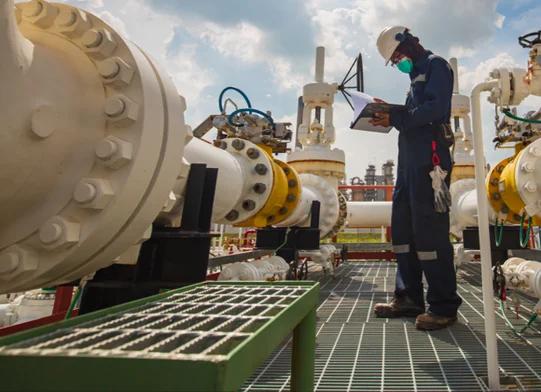DOE Grants Envana $5.2M to Enhance Methane Detection, Mitigation
This project will enable oil and gas operators, tribes, and other U.S.-based entities to reduce, monitor, measure, and quantify oil and gas methane emissions.
Envana Software Solutions (Envana) received $5.2 million from the Department of Energy (DOE) and non-federal sources to accelerate its oil and gas methane monitoring and mitigation technologies. Under the Methane Emissions Reduction Program, Envana will integrate production facility sensor data with methane monitoring sensors for its AI and physics-based models.
“We're excited to strengthen our position in emissions and carbon management by integrating critical scientific and operational capabilities,” said Envana Co-Lead Director, Nagaraj Srinivasan. “These advancements will empower operators to achieve their methane mitigation targets, fulfill their sustainability objectives, and uphold their ESG commitments with greater efficiency and impact.”
The company’s emissions management portfolio will become the first solution to deliver a comprehensive greenhouse gas inventory. The suite will allow oil and gas operators to develop a full lifecycle approach to emissions management—spanning planning, operations, and reporting—while advancing progress in methane mitigation efforts.
Envana’s Solution
Envana’s oil and gas-based greenhouse gas (GHG) emissions management platform integrates operational data with methane detection and measurement inputs from numerous sources, producing accurate emissions quantification and source attribution. These advantages enable customers to enhance their leak detection and repair programs and implement emissions reduction strategies. The Envana platform aligns with OGMP 2.0 and supports customers in building methane management systems.
Operator checking emissions at an oil and gas operation; image credit: Envana

“We're thrilled to collaborate with Texas universities and industry associations to advance methane management,” said PR Panigrahi, Managing Director, Head of Energy and Decarbonization Investments at Siguler Guff and Envana Co-Lead Director. “By leveraging advanced MRV insights and centralized data, we empower the oil and gas sector to reduce emissions, meet regulations, cut costs, and enhance product value, while fostering a future workforce dedicated to environmental protection.”
The DOE grant aims to improve the accuracy and understanding of methane emissions with faster, cost-effective mitigation through improved insights and quicker alerts. Envana will also develop partnerships with local universities and organizations to:
- Advance its methane emissions quantification and understanding
- Increase transparency for affected communities
- Develop internship programs
- Support workforce development
- Advance environmental causes
Reducing Methane in Oil & Gas
According to the International Energy Agency (IEA), methane abatement in the oil and gas industry is one of the cheapest options to reduce GHG emissions anywhere in the economy, and the industry has the largest potential for abatement in the near term. The energy sector accounts for nearly 40% of total methane emissions from human activity; oil and gas operations are responsible for 80 million tons of methane emissions.
In IEA’s Net-Zero Emissions by 2050 scenario, energy-related methane emissions decrease by around 75% by 2030—two-thirds of which comes from reducing oil and gas operations emissions. Further, more than 40% of the emissions reductions to 2030 can be achieved with measures that would result in overall savings given the value of the captured gas. These measures include mechanisms to detect and immediately tackle large leaks, replacing pneumatics and pumps, and installing recovery systems. The IEA said these would require just over 10% of the total spending on methane abatement and can produce results quickly, laying the groundwork for further reductions.